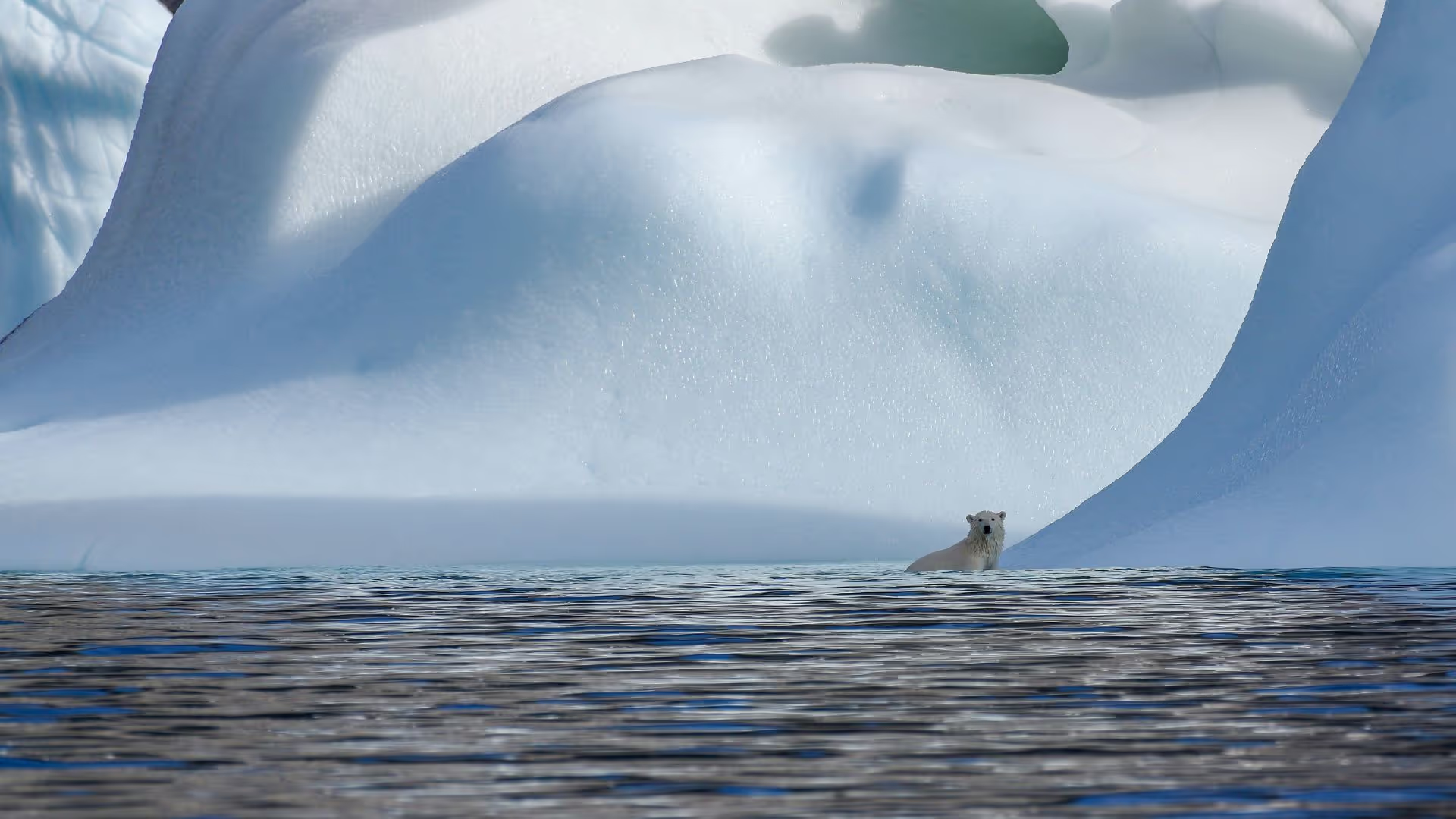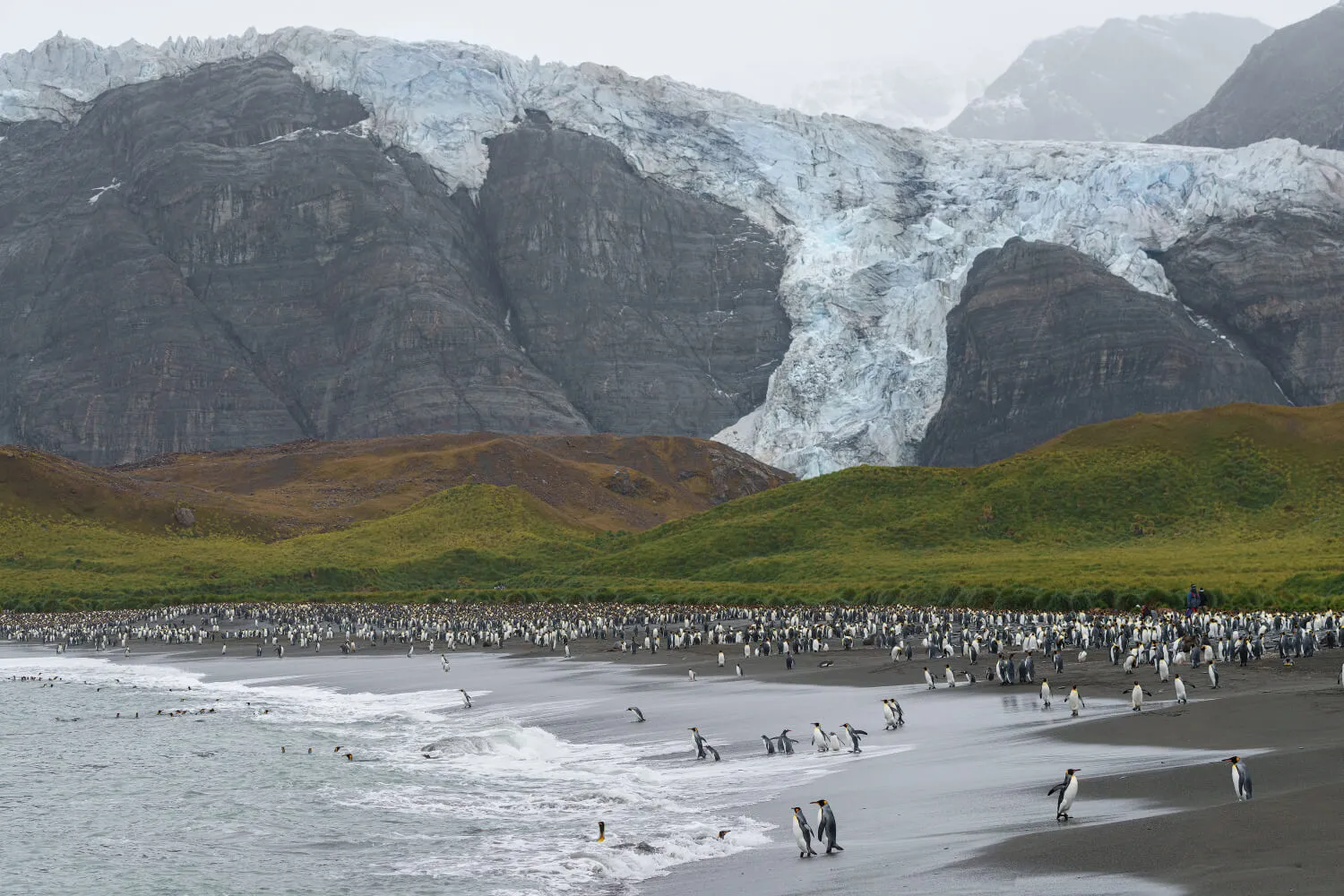

While we’re experts in travel to Antarctica, we’re often asked what the difference is between traveling to Antarctica and the Arctic.The Arctic is the northernmost region on our planet and includes parts of the U.S. state of Alaska and the northern regions of many countries, such as Scandinavian countries, Russia, Canada, Iceland, and Greenland. The North Pole resides in the Arctic Circle, which is about 66.5° north of the Equator. Its wildlife species traverse the Arctic Ocean, the smallest and shallowest of the planet’s five major oceans. The complete opposite of this region is the Antarctic, the southernmost region in the world. It doesn’t belong to any country — it’s our fifth-largest continent, after all — and is almost entirely covered by a thick sheet of ice. It’s also the planet’s highest, driest, windiest, coldest, and iciest continent. Its wildlife traverses the Southern Ocean, the newest named ocean, which is the fourth smallest in the world. Because the Antarctic Circle is the southern counterpart of the Arctic Circle, their conditions are completely opposite on any given date. In addition to the geographical differences between the two regions, there are also several other considerations to keep in mind. Each area varies in wildlife, landscapes, seasonality, and the presence (or lack thereof) of a human footprint.Keep reading to learn more!
An Ocean Surrounded By Land vs. A Continent Surrounded by an Ocean
In terms of geographical makeup, the Arctic and Antarctica are complete opposites. At its most simple, the Arctic is an ocean surrounded by land, while Antarctica is a continent surrounded by an ocean. Every year, the Arctic Ocean is covered by a layer of sea ice that melts come summer. In the Northern Hemisphere’s winter, this sea ice freezes over and serves as a passageway for terrestrial species to make their way across the land.

Inversely, Antarctica is a landmass covered with a thick layer of year-round ice. The landmass is surrounded by the Southern Ocean, which rims over with ice in the Southern Hemisphere’s winter. Because of these geographical differences, the Antarctic is a more hospitable place for sea mammals who scavenge the depths of the Southern Ocean for food, while the Arctic is more supportive of terrestrial animals who roam the vast wilds of the Arctic landscape for food.

Penguins vs. Polar Bears
Though both regions share icy conditions, there are a few key differences in wildlife sightings you can experience in the Arctic and Antarctica. For starters, there’s no place on Earth more plentiful in penguin species than Antarctica. On an Antarctic expedition, you could spot several types of penguins, including the largest of the species, the Emperor penguins in the interior of the Continent, down to the smaller species such as Adélie, Gentoo, and Chinstrap you can observe on islands along the peninsula.

On the other hand, the wildlife in the Arctic tends to be more land-based, including the region’s most iconic: the polar bear, which you cannot see on an expedition in Antarctica. There are also Arctic foxes, muskoxen, caribou, and snowy owls. In both regions, you can spot seals, though the species are different. In the Arctic, you could see harp, walrus, and Arctic ringed seals, while in Antarctica, you could see leopard, crabeater, and Weddell seals. Another commonality between the two regions is the whale species. In both the Arctic and Antarctica, you may see humpback, fin, and minke whales.

Northern Hemisphere Summer vs. Southern Hemisphere Summer
Because the Antarctic Circle is the southern counterpart of the Arctic Circle, their conditions are completely opposite on any given date. That means the seasons in which you can travel to the Arctic or to Antarctica are opposites, too. The Northern Hemisphere summer months of June and July tend to be the most popular to visit the Arctic, while the Southern Hemisphere summer between November and March is the best time to visit Antarctica. You can visit both destinations in the same year and chase a perpetual icy summer.
Human Footprint vs. No Human Footprint
Last but not least, another key difference between the Arctic and Antarctica is the presence of human life. Because the Arctic is surrounded by multiple countries, the region has an ancient and indigenous human presence that still lives today. This includes Inuit communities in the Canadian Arctic and Greenland.

The opposite is true of Antarctica, a land that is not owned by any nation but instead is devoted to scientific exploration. This was confirmed with The Antarctic Treaty, an agreement that was first signed in 1959 and went into effect in 1961. It states that Antarctica will be explored for peaceful purposes only. To this day, there is no indigenous human presence in Antarctica, although there are research stations that are manned year-round by the world’s leading scientists and researchers.

Related Articles
Experience the Extraordinary
From dramatic landscapes to close wildlife encounters, every journey to the White Continent is unique. Let's start planning yours together.
















